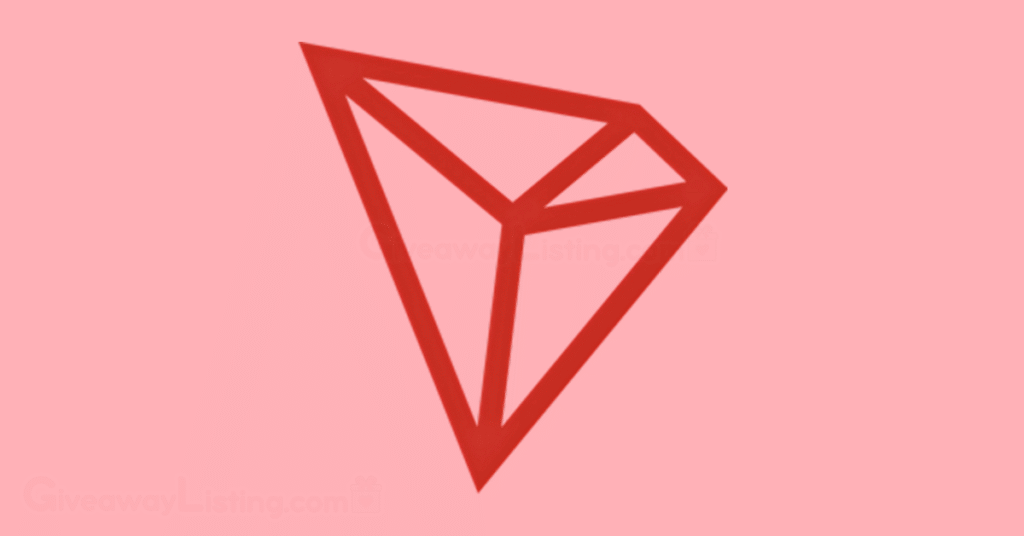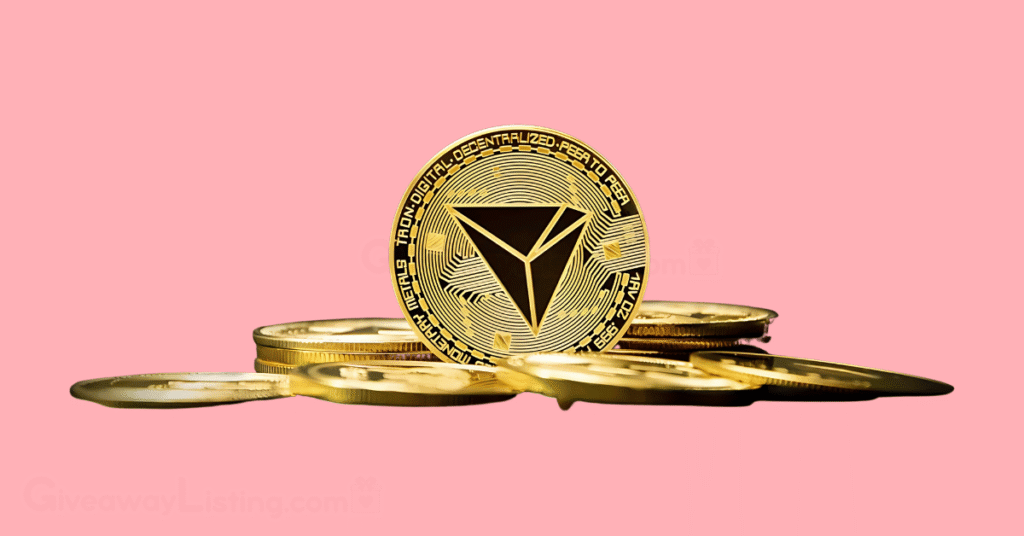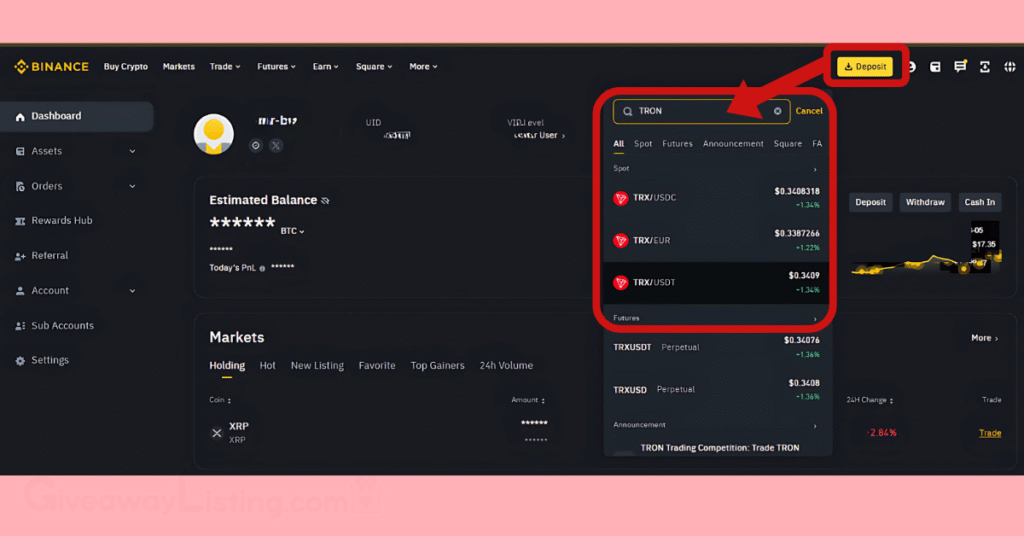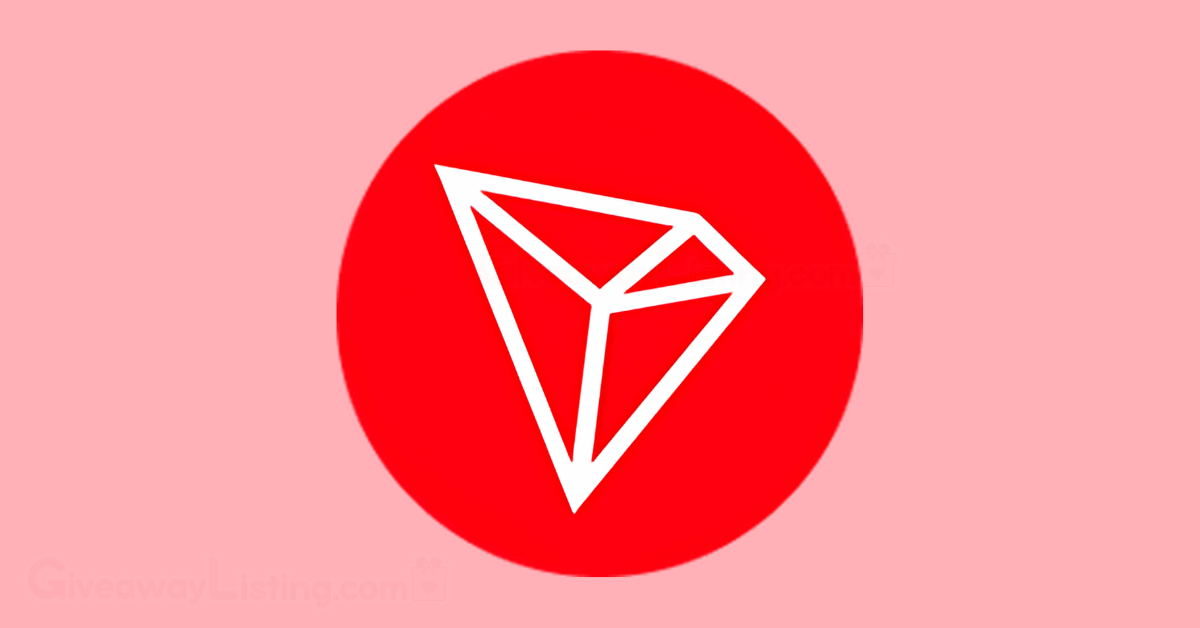What is TRON? TRX Explained – December 2025
TRON is a blockchain-based platform focused on building a decentralized internet and a global digital content entertainment system. Its native cryptocurrency is Tronix, or TRX, which acts as the fuel for the network. The main idea behind TRON is to eliminate middlemen like YouTube or Apple’s App Store, allowing content creators to connect directly with their audiences and get paid without hefty commissions.
Primarily, developers and content creators use the TRON network to build and run decentralized applications (dApps). These aren’t just for content; they span across various sectors, including play-to-earn (P2E) gaming, decentralized finance (DeFi), and art. For the average user, TRON is often the go-to network for moving stablecoins like USDT, thanks to its incredibly low transaction fees and high speed.
As of mid-2025, over half of all USDT in circulation exists on the TRON network. The platform’s architecture gives it a distinct edge in handling a large volume of transactions quickly.
Why is TRON Unique? TRX Features

While TRON shares some similarities with other smart contract platforms, several key differences make it stand out in the crowded crypto space. The platform’s ability to process thousands of transactions per second at a minimal cost is a major draw for both developers and users.
Here’s a quick look at how TRON stacks up against some of its main competitors:
| Feature | TRON (TRX) | Ethereum (ETH) | Solana (SOL) | BNB Chain (BNB) | Cardano (ADA) |
|---|---|---|---|---|---|
| Transaction Speed (TPS) | 2,000 | 15-25 | 65,000+ | 300 | 250 |
| Average Transaction Fee | Extremely Low ($0.000005) | Can be high, varies | Very Low ($0.00025) | Low | Low |
| Consensus Mechanism | Delegated Proof-of-Stake (DPoS) | Proof-of-Stake (PoS) | Proof-of-History (PoH) | Proof-of-Staked-Authority | Proof-of-Stake (PoS) |
| Primary Use Cases | Stablecoin transfers (USDT), dApps, Gaming | DeFi, NFTs, dApps | High-frequency trading, DeFi, dApps | DeFi, dApps, Gaming | dApps, Digital Identity |
| Smart Contract Language | Solidity | Solidity | Rust, C, C++ | Solidity | Plutus, Marlowe |
Beyond its technical specifications, TRON’s history is anything but ordinary. Despite challenges faced, TRON has managed to build a massive user base, with over 324 million accounts and a dominant position in the stablecoin market.
TRON History, Facts & Statistics

TRON has cemented its position as a major player in the crypto world, not just as another digital currency but as a sprawling ecosystem for decentralized applications (dApps). It’s particularly known for its dominance in the stablecoin market, thanks to its high-speed and low-cost transactions. This has made it a favorite for everyday users and developers looking for an efficient platform to build on.
The network consistently ranks among the top blockchains for user activity, transaction volume, and even revenue. However, its journey has been anything but smooth, marked by significant controversies. This makes TRON one of the most interesting projects to follow in the space.
The History of TRON
TRON was created by Justin Sun, a prominent figure in the tech world. The TRON Foundation was established in Singapore in 2017 with a clear goal: to build a decentralized internet, focusing initially on the digital content and entertainment sector. The idea was to create a system where creators could share their work directly with consumers, bypassing corporate giants and their fees. The project got off to a flying start, raising $70 million through an Initial Coin Offering (ICO) in September 2017, shrewdly timed just before the Chinese government banned the practice.
Originally an ERC-20 token on the Ethereum blockchain, TRON launched its own mainnet in June 2018. A month later, the TRON Foundation made a headline-grabbing move by acquiring the pioneering peer-to-peer file-sharing service, BitTorrent, for a reported $140 million. This acquisition was a key part of the strategy to build out its decentralized content-sharing ecosystem.
The early days were not without turmoil. In 2018, TRON was hit by a major plagiarism scandal, with widespread accusations that its whitepaper had lifted sections from other projects like Ethereum and IPFS without proper attribution. Despite the damage to its credibility, the network continued to grow. In a significant structural change, the TRON Foundation was dissolved in December 2021, and the network officially transitioned into a community-governed model known as the TRON DAO (Decentralized Autonomous Organization).
TRON Key Facts & Statistics
- TRON was created in 2017 by Justin Sun.
- It uses the Delegated Proof-of-Stake (DPoS), which relies on 27 Super Representatives to validate transactions.
- The network can handle up to 2,000 transactions per second (TPS).
- TRON uses a unique “Bandwidth” and “Energy” system instead of traditional gas fees, making most transactions nearly free. Every day, each account gets 5,000 free bandwidth points.
- As of mid-2025, there are over 324 million accounts on the TRON network.
- The network has processed more than 11 billion transactions.
- Over 51% of the entire supply of USDT, the world’s largest stablecoin, is issued on the TRON blockchain.
- In March 2023, the U.S. Securities and Exchange Commission (SEC) filed a lawsuit against Justin Sun and the TRON Foundation, alleging the unregistered sale of securities and market manipulation.
- The network is governed by the TRON DAO, where TRX holders can vote for Super Representatives.
- The total supply is just over 100 billion TRX, with about 95 billion in circulation.
- TRX reached a peak price of approximately $0.44.
It is important to remember that the value of TRON (TRX) is volatile and can be affected by market trends, news, and other uncertainties.
TRX Price Predictions. Is TRON Going to Crash or Moon in 2025?

The price of TRX can change dramatically in short periods, influenced by everything from broad market sentiment to project-specific news. Throughout its history, TRX has seen significant peaks and troughs. Its all-time high stands at around $0.44, a level that current holders are eagerly watching.
The price has been heavily impacted by both positive developments, like its growing dominance in stablecoin transactions, and negative events, such as the 2018 plagiarism controversy and ongoing legal battles.
The constant push and pull of these factors creates a dynamic and often unpredictable market. For anyone looking to get involved, it’s critical to understand what drives these price changes.
TRX Price Prediction in 2025
Several key factors could send the price of TRX in either direction in 2025. On the positive side, the single biggest driver is its undeniable adoption as the premier blockchain for USDT transfers. This isn’t just speculation; it’s a use case that generates millions of daily transactions and brings real, sustained activity to the network. This demand for block space, combined with low fees and high transaction speeds, makes TRON incredibly attractive for users in emerging markets and for peer-to-peer payments.
However, the bearish case is just as compelling. The most significant threat is the lawsuit from the U.S. SEC. A negative outcome could severely impact TRX’s price and its availability on exchanges, particularly for U.S. investors. Justin Sun’s reputation remains a double-edged sword; while he is a masterful promoter, the allegations of market manipulation and other controversies create a cloud of risk. Critics also continue to point to the DPoS system’s 27 Super Representatives as a source of centralization, which could make the network vulnerable to control or censorship compared to more decentralized alternatives.
Given these competing forces, expert price predictions for 2025 vary widely. Most data-driven analysis suggests a potential trading range that reflects this uncertainty. Some forecasts place a possible low for TRX around the $0.26 to $0.30 mark if negative pressures prevail. On the flip side, optimistic scenarios, likely fueled by continued stablecoin growth and a favorable market, see TRX pushing past its recent highs, with some analysts eyeing targets between $0.35 and $0.38 or even higher.
For a detailed breakdown, this TRON price prediction offers deeper analysis and potential price targets.
Is TRX Going to Crash or Moon in 2025?
So, what’s the verdict for 2025? Is a major price pump or a dramatic dump more likely? The answer depends on which narrative you believe will win out. TRON’s fate this year is tied to the tension between its utility and its liabilities.
The H1 2025 performance reports show a network that is firing on all cylinders: transaction volume, active wallets, and network revenue are all posting near-record numbers. This is evidence of a product that people are actively using. As long as USDT requires a fast and cost-effective network, TRON offers a powerful, value-driving tailwind. If the broader crypto market trends upwards, TRON’s strong fundamentals could see its price appreciate significantly.
However, there are other factors that indicate a crash, primarily legal and regulatory ones. An unfavorable ruling in the SEC case would almost certainly trigger a sharp price drop. It could lead to delistings from major exchanges and make it difficult for institutional partners to remain involved.
Any further controversies surrounding its founder or a major security exploit on the network could also spook investors and lead to a sell-off. Ultimately, a bet on TRON in 2025 is a bet on whether its unstoppable utility can outweigh its considerable reputational and regulatory risks.
TRON Risks, Scams, and Hacks

Getting into the TRON ecosystem, whether for trading, gaming, or simply moving funds, comes with its own set of challenges. The landscape is not just about potential market gains; it’s also filled with risks and clever scams designed to separate you from your assets. Because TRON is a major hub for stablecoins like USDT, it has become a prime target for bad actors looking to exploit unsuspecting users.
The high volume of transactions and the sheer number of users on the network create a rich environment for these activities. Scams can range from simple phishing attempts to more sophisticated attacks that exploit vulnerabilities in smart contracts or wallet features. Staying aware of these threats is the first and most important step in protecting your funds while taking part in the TRON world.
The Risks Associated With TRON
Beyond the usual market volatility that affects all cryptocurrencies, TRON carries some specific risks. The project’s governance and public image are heavily tied to its founder, Justin Sun, who has a history of attracting controversy. The ongoing lawsuit from the U.S. Securities and Exchange Commission (SEC) is a major point of concern, as a negative outcome could seriously affect TRX’s value and accessibility.
Another frequently discussed risk is the network’s degree of centralization. TRON’s Delegated Proof-of-Stake (DPoS) model uses only 27 Super Representatives to validate all network transactions. Critics argue that this small number of validators makes the network more susceptible to censorship or control compared to more decentralized blockchains like Ethereum. There’s also the reputational risk stemming from reports that have linked the network to illicit activities, which could deter mainstream adoption and institutional investment.
To help keep your involvement with TRON as safe as possible, here are a few key pointers:
- Stay Informed: Keep up with news about the SEC lawsuit and any other regulatory developments. These events can have a direct impact on TRX’s price.
- Account for Volatility: Never put in more money than you are willing to lose. The price of TRX can and will experience sharp movements.
- Understand the Resource Model: Learn how TRON’s Bandwidth and Energy system works. Freezing TRX for these resources is far more cost-effective than burning TRX for every transaction. Many new users overpay in fees without realizing there’s a cheaper way.
- Diversify Your Holdings: Avoid putting all your crypto assets into a single project. Spreading your investments can help protect against project-specific risks.
How to Avoid TRON Scams and Hacks?
The TRON network has had its share of security incidents and widespread scams. One notable event occurred in late 2024 when a flaw in the UpdateAccountPermission feature was exploited, leading to the theft of millions of dollars from over 2,130 TRON wallets. In this attack, hackers were able to add their own permissions to a user’s account, effectively locking the rightful owner out and draining their funds.
Scams are also a persistent problem. A common tactic involves airdropping fake tokens into users’ wallets. These tokens often appear valuable, but when the user tries to trade them on a decentralized exchange, they are directed to a malicious site that drains their wallet.
Another trick involves fake USDT, where scammers send a small amount of real USDT to a wallet and then follow up with fake tokens, hoping the user will interact with the wrong ones. These schemes are designed to look legitimate and prey on users who might not check the fine details of a transaction.
Here are some red flags to watch for to protect yourself:
- Unsolicited Airdrops: Be extremely cautious of any unknown tokens that appear in your wallet. Do not interact with them or visit any associated websites.
- Suspicious DMs: Scammers often reach out on platforms like Telegram or X (formerly Twitter) with offers that seem too good to be true. Ignore them.
- Fake Websites: Always double-check the URL of any exchange or dApp you are using. Scammers create convincing copies to steal your login credentials or get you to approve malicious transactions.
- Unusual Permissions: Be cautious of any dApp requesting broad or unusual permissions to access your wallet.
How to Secure Your TRX?
Taking proactive steps to secure your TRX is non-negotiable. Your digital assets are your responsibility, and a few simple measures can make a huge difference in keeping them safe from hackers and scammers.
- Use a Hardware Wallet: This is the gold standard for crypto security. A hardware wallet, like a Ledger or Trezor, keeps your private keys offline, making it nearly impossible for online attackers to access them.
- Create Strong, Unique Passwords: Use a different, complex password for every crypto exchange and service you use. A password manager can help you keep track of them.
- Enable Two-Factor Authentication (2FA): Always activate 2FA on your exchange accounts. Use an app-based authenticator like Google Authenticator or Authy instead of SMS-based 2FA, which is more vulnerable.
- Bookmark Official Sites: To avoid phishing scams, bookmark the official websites for your exchanges and wallets and only access them through those bookmarks.
- Keep Your Recovery Phrase Offline: Write down your wallet’s recovery phrase (seed phrase) and store it in a secure, offline location. Never store it as a digital file on your computer or phone.
- Use a Dedicated Device: If possible, use a computer or phone that is dedicated solely to your crypto activities to reduce the risk of malware infection.
Ultimately, the best defense is a healthy dose of skepticism. Always rely on official TRON channels for news and updates, and never, ever connect your wallet to an unknown dApp or click on a suspicious link.
Latest News on TRON

Since its launch, TRON has made significant strides, moving from a concept for a decentralized content network to a powerhouse in the blockchain world, particularly for stablecoin transactions. Its three-layer architecture and focus on high throughput and low fees have attracted a massive user base and a growing number of developers.
The project’s acquisition of BitTorrent and its transition to the TRON DAO have been key moments in its development, showing its ambition to build a comprehensive decentralized ecosystem.
Here are some of the latest developments and upcoming events for TRON in 2025:
- Strong H1 2025 Performance: The first half of 2025 saw TRON’s on-chain activity and revenue reach near-record levels. The supply of USDT on the network grew by 41% to over 81 billion, solidifying its leadership in the stablecoin market.
- NASDAQ Listing: In a move to gain more mainstream financial credibility, Tron Inc. was listed on the NASDAQ exchange in July 2025.
- Growing Institutional Support: Several major players in the crypto industry, including Kraken, Nansen, and P2P.org, have joined the TRON network as Super Representatives, strengthening its validator base.
- SEC Case Developments: Justin Sun and the U.S. SEC are reportedly in discussions to potentially resolve the ongoing civil fraud case, a development that is being closely watched by the entire crypto community. You can find more breaking TRON news and updates as they happen.
- Ecosystem Expansion: The network continues to see new integrations with platforms spanning payments, infrastructure, and data, including Chainlink, MoonPay, and Rumble.
To stay on top of all official announcements, be sure to follow TRON’s verified social media channels:
- X (Twitter): @trondao
- Telegram: t.me/trondao
- Reddit: r/Tronix/
How to Get Started with TRON?

Getting your hands on TRX and starting with the TRON network is a straightforward process. The ecosystem is built to be user-friendly, with low barriers to entry for newcomers. Whether you want to trade, play games, or just send funds, it only takes a few steps.
Here is a simple guide to get you going:
- Get a Wallet: First, you’ll need a wallet that supports TRON (TRX) and TRC-20 tokens. For a software wallet that you can use on your phone or browser, options like TronLink or Trust Wallet are popular choices. For maximum security, consider a hardware wallet like a Ledger, which keeps your assets offline.
- Choose an Exchange: You’ll need to buy TRX from a cryptocurrency exchange. Major platforms like Kraken and Binance list TRX. Note that TRX is not available on some U.S.-based exchanges like Coinbase, so check for availability in your region.
- Create and Verify Your Account: Sign up for an account on your chosen exchange. You will likely need to complete an identity verification process, which usually involves providing a government-issued ID.
- Deposit Funds: Add funds to your exchange account. Most exchanges accept various payment methods, including bank transfers, credit cards, and debit cards.
- Buy TRX: Go to the trading or buying section of the exchange, find TRON (TRX), and enter the amount you wish to purchase.
- Secure Your TRX: After buying, it’s a good security practice to move your TRX from the exchange to the personal wallet you set up in the first step. This gives you full control over your private keys.
- Explore the Ecosystem: With TRX in your wallet, you’re ready to go. You can stake your coins to vote for Super Representatives and earn rewards, try out the many dApps in the TRON ecosystem, or take part in different online events.
This guide provides a full picture of the TRON network and its native token, TRX. We’ve covered what it is, its unique features, its colorful history, and the potential price movements for 2025. As with any digital asset, it’s vital to be aware of the potential for scams and to prioritize the security of your funds by using trusted wallets and practicing safe online habits.
Here’s a quick rundown of the most essential points:
- TRON is a high-speed, low-cost blockchain designed for dApps, content sharing, and gaming.
- Its native currency, TRX, is used for transactions, governance, and network resources.
- The network uses a Delegated Proof-of-Stake (DPoS) system with 27 Super Representatives.
- It is the leading platform for USDT stablecoin transfers, hosting over 51% of the total supply.
- The project faces risks from an SEC lawsuit and concerns about network centralization.
- Security is crucial; always use a secure wallet and be cautious of unsolicited offers and suspicious links.
This information is current as of December 2025.
What is Tron FAQs
Here are answers to some frequently asked questions about TRON in 2025
What is TRON Used for?
TRON is primarily utilized for decentralized applications (dApps) and for processing high volumes of transactions at a very low cost. It has become the dominant platform for stablecoins, with over 51% of the world’s USDT running on its network. Developers also use it for building play-to-earn (P2E) games and decentralized finance (DeFi) applications, capitalizing on its ability to handle up to 2,000 transactions per second.
Are TRON and TRX the Same?
No, TRON is the blockchain platform, while TRX (or Tronix) is its native cryptocurrency. TRX acts as the fuel for the network, used to pay for resources like Bandwidth and Energy, and to participate in governance by voting for the 27 Super Representatives. TRON is the ecosystem, and TRX is the currency that powers it.
What is the Concept of TRON?
The main concept behind TRON is to create a decentralized internet, removing the need for corporate middlemen in content distribution. Launched in 2017, the idea was to let creators share their work directly with consumers and receive fair compensation. This was a key motivation behind the platform’s $140 million acquisition of BitTorrent in 2018.
Will TRON Reach $10?
TRON reaching $10 is extremely unlikely due to its massive circulating supply of over 95 billion tokens. For TRX to hit $10, its market capitalization would need to be close to $1 trillion, a valuation that is not realistic in the current market. The token’s all-time high price is only around $0.44, making a $10 target improbable.

